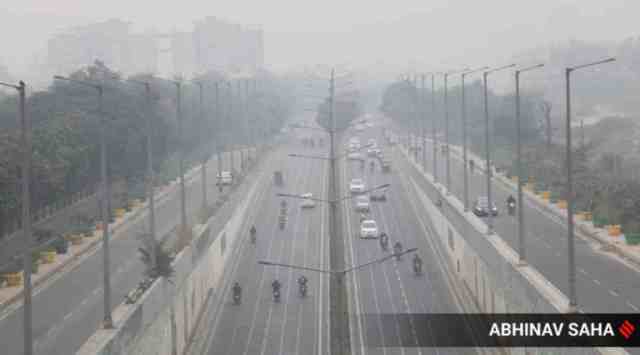Surge in pollution during 2nd wave lockdown: Study
Instances of high PM2.5 levels coincided with high mortality counts when cases surged in the city, noted the study, which was recently published in ‘Chemosphere’, an international journal that publishes work on chemicals in the environment.
 The researchers used a ‘lockdown emissions inventory’ they developed to estimate emissions and their sources during the lockdown.
The researchers used a ‘lockdown emissions inventory’ they developed to estimate emissions and their sources during the lockdown. A study on air pollution in Delhi during the second Covid wave and the consequent lockdown last year found an “unusual surge in PM10 and PM 2.5 levels” during the lockdown, when most activities were curtailed. Instances of high PM2.5 levels coincided with high mortality counts when cases surged in the city, noted the study, which was recently published in ‘Chemosphere’, an international journal that publishes work on chemicals in the environment.
 The team that conducted the study comprised Gufran Beig, founder project director, SAFAR (System of Air Quality and Weather Forecasting and Research); K S Jayachandran, member secretary, Delhi Pollution Control Committee (DPCC); M P George, scientist, DPCC; Aditi Rathod, S B Sobhana and R Shinde, from the Indian Institute of Tropical Meteorology, Pune; V Jindal from the Indraprastha Institute of Information Technology, Delhi; S K Sahu from Utkal University, Bhubaneswar.
The team that conducted the study comprised Gufran Beig, founder project director, SAFAR (System of Air Quality and Weather Forecasting and Research); K S Jayachandran, member secretary, Delhi Pollution Control Committee (DPCC); M P George, scientist, DPCC; Aditi Rathod, S B Sobhana and R Shinde, from the Indian Institute of Tropical Meteorology, Pune; V Jindal from the Indraprastha Institute of Information Technology, Delhi; S K Sahu from Utkal University, Bhubaneswar.
The researchers explain in their study that a decline in particulate matter levels was expected during the lockdown. But no “appreciable decline in PM was noticed as compared to reference years” of 2017 to 2019.
Contrary to expectations, a prolonged peak in PM concentration was observed from April 24-May 2, and this coincided with the time when mortality counts were at their peak of around 400 deaths a day, as per the study. “An unaccounted emission source was playing a leading role after balancing off the impact of curtailed lockdown emissions,” it noted.
The study analysed variations in PM 2.5 and PM 10 from March 1 to June 30, 2021, covering the pre-lockdown and post-lockdown phases as well. The lockdown was imposed from March 19 to May 31.
The researchers used a ‘lockdown emissions inventory’ they developed to estimate emissions and their sources during the lockdown. The forecasting model had predicted a reduction in emissions during this time.
The estimated PM 2.5 level in April, during the lockdown, considering the restrictions, was around 30 to 40 µg/m3, as per data provided by Beig. If a lockdown had not been imposed, it would have been around 75-80 µg/m3. The observed PM 2.5 average in April was 100-125 µg/m3, marking an increase in emissions compared to the normal.
While dust flow could have been one of the reasons for peak pollution levels observed around April 28, it was not found to be sufficient enough to explain the prolonged period of high particulate matter levels, thereby pointing to an “unaccounted source” that was adding emissions, as per the study. This source was producing fine particles like that produced by burning fossil fuels or biofuels, since the growth rate of PM 2.5 was found to be higher than PM 10. Since traffic had reduced during the lockdown, fossil fuel emissions from there were not considered significant.
The high emissions can then be attributed to “low-temperature combustion associated with biomass burning in crematories which were at peak during this period… As evident, peak mortality period was directly coinciding with peak levels of PM2.5,” the study noted.







